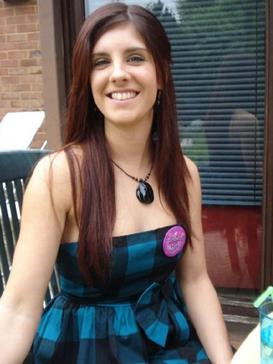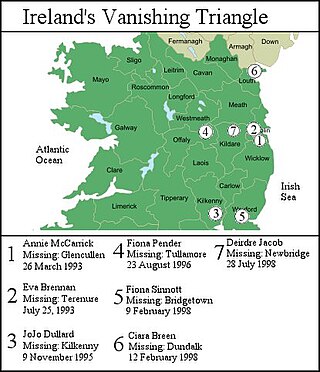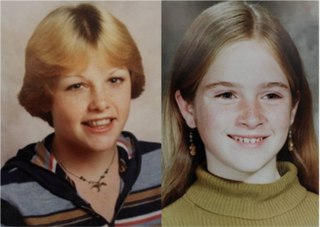
"Bennington Triangle" is a phrase coined by American author Joseph A. Citro to denote an area of southwestern Vermont within which a number of people went missing between 1945 and 1950. This was further popularized in two books, including Shadow Child, in which Citro devoted chapters to discussion of these disappearances and various items of folklore surrounding the area. According to Citro, the area shares characteristics with the Bridgewater Triangle in Southeastern Massachusetts and stories of strange happenings had been told about Glastonbury and the surrounding area for many years, the best-known of which is probably that of the disappearance of Paula Jean Welden.
The backpacker murders were a spate of serial killings that took place in New South Wales, Australia, between 1989 and 1993, committed by Ivan Milat. The bodies of seven missing young people aged 19 to 22 were discovered partially buried in the Belanglo State Forest, 15 kilometres (9.3 mi) south-west of the New South Wales town of Berrima. Five of the victims were foreign backpackers and two were Australians from Melbourne. Milat was convicted of the murders on 27 July 1996 and was sentenced to seven consecutive life sentences, as well as 18 years without parole. He died in prison on 27 October 2019, having never confessed to the murders for which he was convicted.

Lakeville is a census-designated place (CDP) in Litchfield County, Connecticut, United States, close to Dutchess County, New York. It is within the town of Salisbury, but has its own ZIP Code (06039). As of the 2010 census, the population of Lakeville was 928, out of 3,741 in the entire town of Salisbury. The Hotchkiss School is located in Lakeville, and the Indian Mountain School is nearby.

The Highway of Tears is a 719-kilometre (447 mi) corridor of Highway 16 between Prince George and Prince Rupert in British Columbia, Canada, which has been the location of crimes against many women, beginning in 1970 when the highway was completed. The phrase was coined during a vigil held in Terrace, British Columbia in 1998, by Florence Naziel, who was thinking of the victims' families crying over their loved ones. There are a disproportionately high number of Indigenous women on the list of victims, hence the association with the Missing and Murdered Indigenous Women (MMIW) movement.

Nels Hansen Smith was an American politician who served as the 18th Governor of Wyoming from 1939 until 1943. He was a Republican.

Paula Jean Welden was an American college student who disappeared while walking on Vermont's Long Trail hiking route. Local sheriffs were criticized for errors made in the investigation, which led to the creation of the Vermont State Police. Welden's fate remains unsolved, and was one of several unexplained disappearances in the same area at the time.

Sian Emma O'Callaghan was a 22-year-old British woman who disappeared from Swindon, Wiltshire, England, having last been seen at a nightclub in the town in the early hours of 19 March 2011. Her body was found on 24 March near Uffington in Oxfordshire. On 19 October 2012, at Bristol Crown Court, 48-year-old Christopher Halliwell pleaded guilty to O'Callaghan's murder.

Ireland's Vanishing Triangle is a term commonly used in the Irish media when referring to a number of high-profile disappearances of Irish women from the late 1980s to the late 1990s. Several other women were also murdered within the triangle and their cases remain unsolved as well. All of the cases appeared to share some common characteristics. The women's ages range from their late-teens to late-30s, they disappeared inexplicably and suddenly, and no substantial clues or evidence of their fate has ever been found despite large-scale searches and campaigns by the Gardaí to find them. Gardaí believe their remains are likely to be buried in remote fields, bogs and forests. The triangle is in the eastern part of the island, roughly the boundaries of Leinster, in an 80-mile area outside Dublin.

The Santa Rosa hitchhiker murders were a series of at least seven unsolved homicides involving female hitchhikers that took place in Sonoma County and Santa Rosa of the North Bay area of California in 1972 and 1973. All of the victims were found nude in rural areas near steep embankments or in creek beds near roads. Californian police believe that the perpetrator(s) of the Santa Rosa murders "interviewed" potential victims before killing them. Despite extensive investigations, they remain unidentified.

The Texas Killing Fields is a title used to roughly denote the area surrounding the Interstate Highway 45 corridor southeast of Houston, where since the early 1970s, more than 30 bodies have been found, and specifically to a 25-acre patch of land in League City, Texas where four women were found between 1983 and 1991. The bodies along the corridor were mainly of girls or young women. Furthermore, many additional young girls have disappeared from this area who are still missing. Most of the victims were aged between 12 and 25 years. Some shared similar physical features, such as similar hairstyles.
Since 1996, there has been an unusually high number of cases involving young women disappearing along U.S. Route 29 (US 29) in Virginia, or an area known as the "Route 29 Corridor". Five young women disappeared in five years between 2009 and 2014, earning it a particularly notorious reputation. Of the nine murders/disappearances, only the cases of Morgan Dana Harrington (2009), Alexis Murphy (2013) and Hannah Graham (2014) were solved ending in convictions of their murderers, the other cases are still unsolved.
Nels Jensen Smith was an American politician in the state of Wyoming. He served in the Wyoming House of Representatives as a member of the Republican Party. He served as Speaker of the Wyoming House of Representatives from 1977 to 1979. He attended the University of Wyoming and was a rancher. His grandfather, Nels H. Smith, was a Governor of Wyoming.

Margaret Martin was a resident of Kingston, Pennsylvania, United States, who went missing on December 17, 1938, and was found dead in Wyoming County, Pennsylvania, several days later. Martin was a recent graduate of the Wilkes-Barre Business College. On December 17, 1938, she met an unknown man who claimed to be offering her a secretarial job, and was never seen alive again. Her body was discovered in the wilderness 25 miles (40 km) away by a hunter four days later. Martin's death resulted in a lengthy manhunt. Numerous suspects were examined, but no one was ever convicted of the crime. As of 2024, it remains an unsolved case.

The murders of Kerry Graham and Francine Trimble are a currently unsolved double murder that occurred in December 1978, when both girls—aged 15 and 14 respectively—disappeared after leaving their homes in Forestville, California, to visit a shopping mall in Santa Rosa. Their remains were discovered in July 1979 approximately 80 mi (130 km) north of Forestville, concealed within duct-taped garbage bags and buried within an embankment of a heavily overgrown woodland area located beside a remote section of Highway 20, 12 mi (19 km) from the city of Willits.
The Denver Prostitute Killer was an American serial killer responsible for the murder of at least 17 women and girls in Denver and its various suburbs between 1975 and 1995. In 2005, based upon results from DNA profiling, it was determined that the most likely killer was Billy Edwin Reid who was previously arrested and charged with the 1989 murder of Lannell Williams and Lisa Kelly. Reid was convicted and sentenced to life imprisonment for those specific murders. The killings were grouped together only in 2008 – until then, each of these crimes was considered to have been committed by different people.
The Münsterland murders is the nickname given to a series of unsolved murders committed in the Münster and Bentheim areas of West Germany from 1971 to 1974.

The murders ofKate BushellandLinda "Lyn" Bryant, a 14-year-old schoolgirl and a 41-year-old woman, respectively, occurred in separate incidents in the West Country, England. The events occurred on 15 November 1997 and 20 October 1998 respectively. The similar circumstances of the murders led investigators to conclude that there is a high possibility the murders are linked, with both killed with knives while walking dogs along isolated lanes.
William Henry Redmond was an American child molester and suspected serial killer. Redmond, an Ohio native and former carnival worker, was indicted in 1988 for the 1951 Pennsylvania murder of 8-year-old Jane Marie Althoff. Redmond was also a suspect in the 1951 disappearance of 10-year-old Beverly Potts in Ohio and the unsolved murder of 7-year-old Maria Ridulph in 1957. In prison, Redmond reportedly told a cellmate that he had killed at least three other young girls.

Katherine E. Hull was a 22-year-old woman from Syracuse, New York in the United States who disappeared from Lebanon Springs, New York on April 2, 1936. She was visiting her grandmother, set out for a walk on April 2, 1936, and was last seen hitchhiking.











